-
Posts
4,346 -
Joined
-
Last visited
Content Type
Profiles
Forums
Events
Store
Posts posted by Chris Davidson
-
-
On 6/21/2024 at 5:59 PM, Chris Davidson said:
Fairly certain Breneman knew nothing of Dino/NPIC when the interview took place in 1978.
Another way of looking at the Itek/Nix missing frames is just to add it to the back end (instead of the front end) after z313.
Assume the Nix/Z sync does start at extant Z291.
Sort of the way Breneman and Dino described the extra missing head shot frames.
Notice that Itek did not assign frame numbers to the report, they only specify it was the frames prior to the extant headshot.
Such as 291-319 instead of 285-313.
-
And who did a study of the Nix film back in 1967?
The study they completed consisted of a version that possessed 28 frames prior to the extant z313 frame.
Meyers starts syncing Nix to Z starting at Z291.
313 - 291 = 22 frames.
Where are the Nix frames used by Itek that are absent from every Nix version in existence today?
Once you find those then a new conversation can ensue.
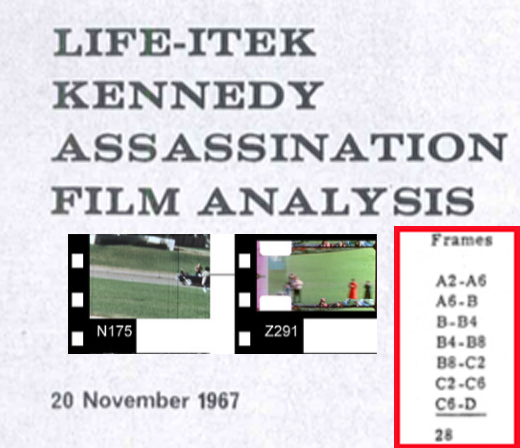
-
Fairly certain Breneman knew nothing of Dino/NPIC when the interview took place in 1978.
-
Recognize the conflation:
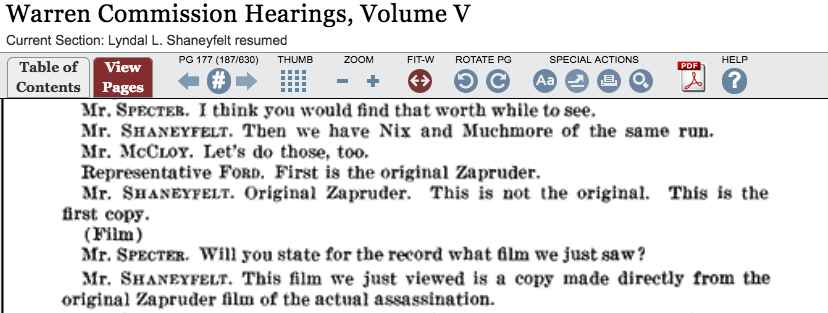
-
On 6/14/2024 at 6:53 AM, Chris Davidson said:
Mr. SPECTER. At any time in the course of the examination of the Zapruder film, was the original of that movie obtained?
Mr. SHANEYFELT. Yes; it was. On February 25, Mr. Herbert Orth, who is the assistant chief of the Life magazine photographic laboratory, provided the original of the Zapruder film for review by the Commission representatives and representatives of the FBI and Secret Service here in the Commission building.
Mr. SPECTER. And what was the reason for his making that original available?
Mr. SHANEYFELT. Life magazine was reluctant to release the original because of the value. So he brought it down personally and projected it for us and allowed us to run through it several times, studying the original.
Mr. SPECTER. Was that because the copies were not distinct on certain important particulars?
Mr. SHANEYFELT. That is correct. The original had considerably more detail and more there to study than any of the copies, since in the photographic process each time you copy you lose some detail. -
On 6/13/2024 at 2:06 AM, Jeremy Bojczuk said:
and because the damage to the original film was done in Chicago that evening
I didn't know the WC was formed before the film was damaged.
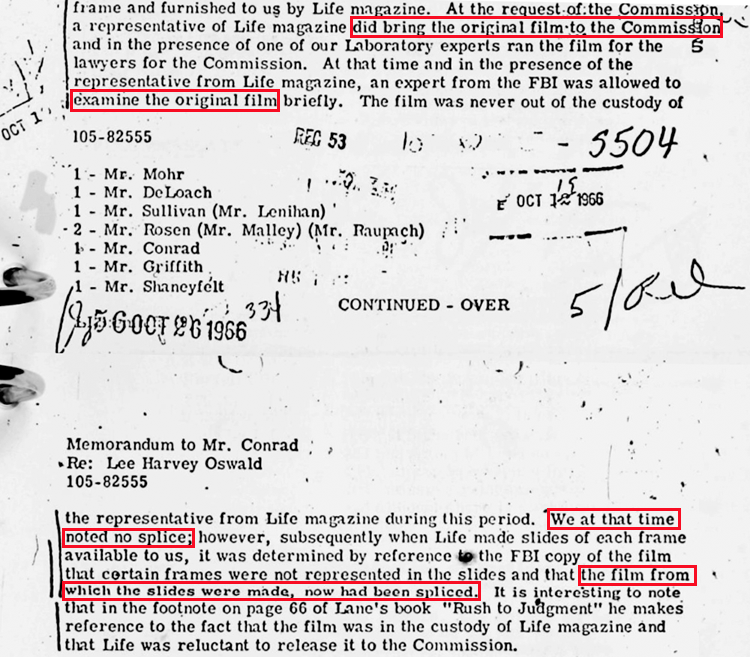
-
9 hours ago, Jeremy Bojczuk said:
Correct, though not in the way Roger thinks. The plane in question was heading to Life magazine's photo lab in Chicago, not the CIA's photo lab in Washington. We can be sure that the plane was heading to Chicago because the film was examined in Life's photo lab in Chicago that afternoon, and because the damage to the original film was done in Chicago that evening (see, for example, Loudon Wainwright, Life: Great American Magazine, Knopf, 1986, pp.357-376).
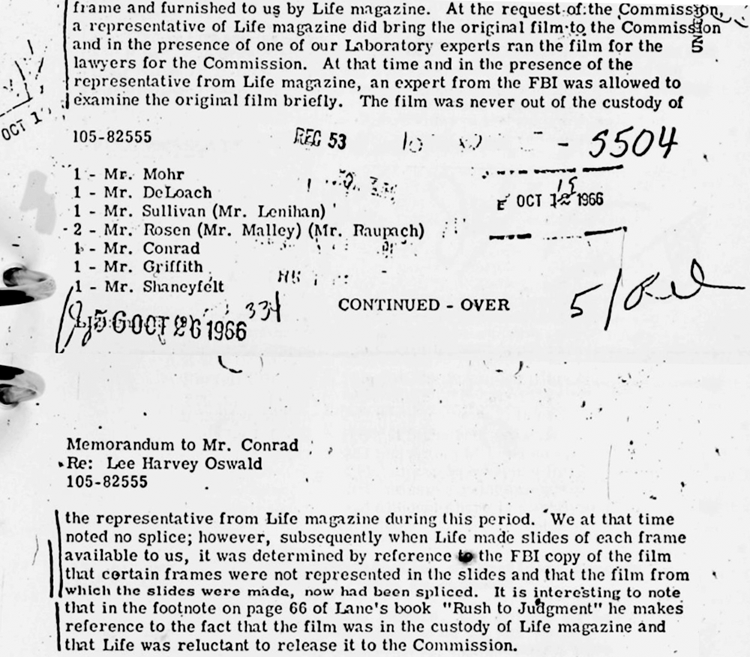
-
-
4 hours ago, Paul Bacon said:
What cut lines are you referring to Chris? Would you point them out to me?
Besides those.
Look at the top edge of the sign.
The splice comes in at a different height.
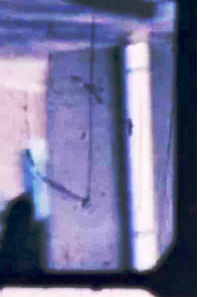
-
9 hours ago, Matt Cloud said:
A man of few words. But your agreement with me there would seem to contradict your previous statement about "zoom and strangely cropped," yes?
Strangely cropped similar to what is seen in the extant Z film around the headshot.
11 hours ago, Matt Cloud said:I overlaid the WC on top of the Z. The WC frame appears indeed to be much smaller than the "usable portion" of Z frame.
So, yes, seemingly cropped at least.
Sorry, but this is what I meant to respond with a "yes" to. It was the immediate previous post to my "yes" response.
12 hours ago, Matt Cloud said:But I think if you account for the "useable space" of the 8mm film, subtract the sprocket hole side that is, and account for the difference in vertical framing (WC a little high in its framing), we have essentially the same image, no?
Which would mean the same FOV at the beginning of both films, correct?
I think you had asked me for footage up the street, so it's unnecessary.
-
39 minutes ago, Matt Cloud said:
But I think if you account for the "useable space" of the 8mm film, subtract the sprocket hole side that is, and account for the difference in vertical framing (WC a little high in its framing), we have essentially the same image, no?
Yes.
-
4 hours ago, Paul Bacon said:
What am I missing Chris? The re-enactment frame looks zoomed in.
Paul,
You're absolutely correct.
Zoomed and strangely cropped.
That's an odd shape for the StemmonsSign corner, especially since both frames were shot with the same camera, from the same location, within months of each other.
It's as if some splicing has occurred, based on the black cut lines in that area. imo
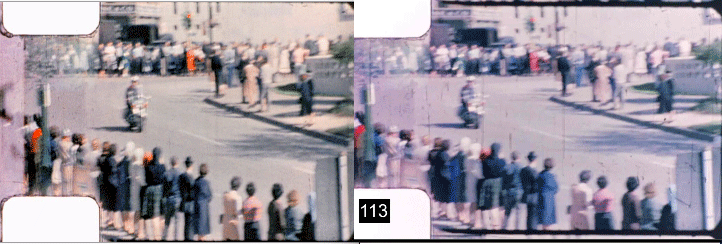
-
Full zoom?
Easier to compare extant Z to WC reenactment Z.
Triangulation of three stationary objects near the frame edges for comparison.
Unless you believe the reenactment was cropped approx 10% for some unknown reason.
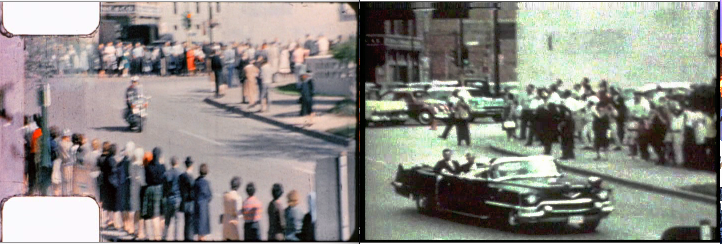
-
1 minute ago, Matt Cloud said:
Where are the top images from? The color frames using the B&H, at the three different settings. Can you provide a link?
I filmed back in 2005.
Frame credit below to Rick Janowitz:
Maybe you could ask him for some examples. Better quality.
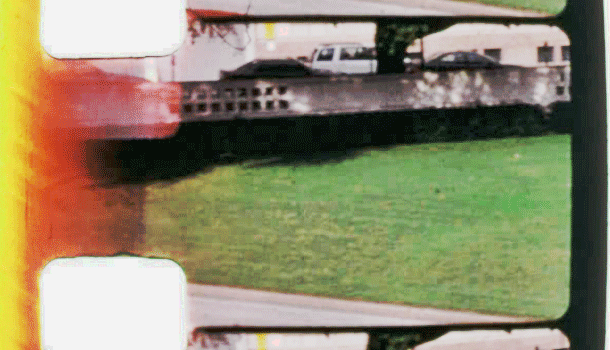
-
-
-
-
-
— All the controls for the Acme-Dunn optical printer were accessible from one side of the machine. Photograph: The Cine-Technician, May/June 1944.
Initially, the Acme-Dunn printer was manufactured purely for governmental use, with the first machine snapped up by the U.S. Navy’s Central Photographic Laboratory in Washington, D.C. After the war, widespread production began and the Acme-Dunn became what motion pictures had always lacked: an industry-standard optical printer.
On 15 March 1945, the Academy Research Council bestowed a Class 3 Award on Linwood Dunn, Cecil Love and Edward Furer for the design and construction of their new optical printer, commenting, “This machine exemplifies technical advancement necessary to keep pace with the ever increasing scope of the motion picture art18.” Nearly forty years later, in 1981, the Academy recognised the same three men for the same achievement, retrospectively awarding them a special Oscar for technical merit.
Experiments in Optical
Once standardised, the optical printer solidified its reputation as a piece of essential equipment capable of performing a multitude of onerous tasks without complaint — and saving the production valuable dollars to boot — as illustrated in this laconic report from a 1956 edition of Motion Picture Daily: “C&G Films Effects, New York City, announce the acquisition of a new optical printer that does everything but write dialogue ... The idea, of course, is to save time in the industry where time is money19.”
— Press advertisement from 1962 for an Acme optical printer.
  
Even though the optical printer was rapidly becoming an old dog, it was still capable of learning new tricks. For example, during the 1950s, Raymond Spottiswoode, an early proponent of 3D cinema, published a number of papers citing the optical printer as a useful tool in the delicate task of adjusting stereo displacement effects. And in 1957, Oxberry introduced the first commercially available aerial image optical printer, so named because the receiving camera was focused not on the plane of the film it was copying, but on a “virtual” or “aerial” image floating in empty space between its own lens and that of the projector. -
-
7 hours ago, Ben Green said:
Firstly, apologies if this topic has already been covered off elsewhere, but I'm interested to know if any JFKA researchers have used/or are using AI as part of their work, or how valuable researchers believe AI could be in this quest.
If it is being used - how so? And what specific areas of JFKA research do people think AI could be a useful tool for?
Given the sheer volume of documents, research, books, audio, still and moving images, and other resources pertaining to the assassination, my view is AI could be very useful indeed. Possibly even a game changer.
I see potential particularly around thinks like image enhancement, facial recognition and also modelling the likelihood of various scenarious.
Would be interested to know the thoughts of others.
Used intelligently, it "can be" and "has been" a very helpful and productive tool when working with equations.
-
-
Frame on the right side shot with B/H 414:
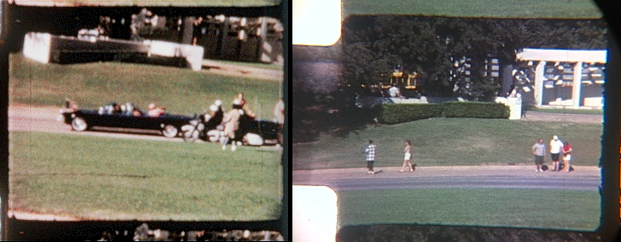
-
btw, the latter footsie is actually his left leg and foot:
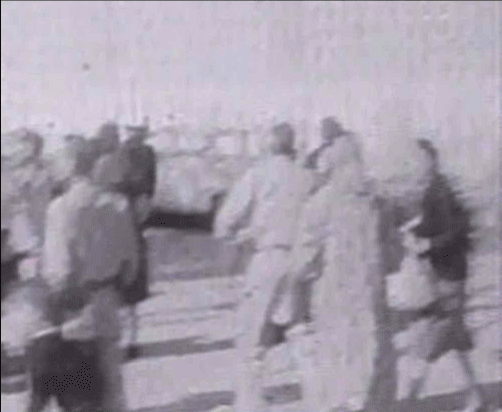


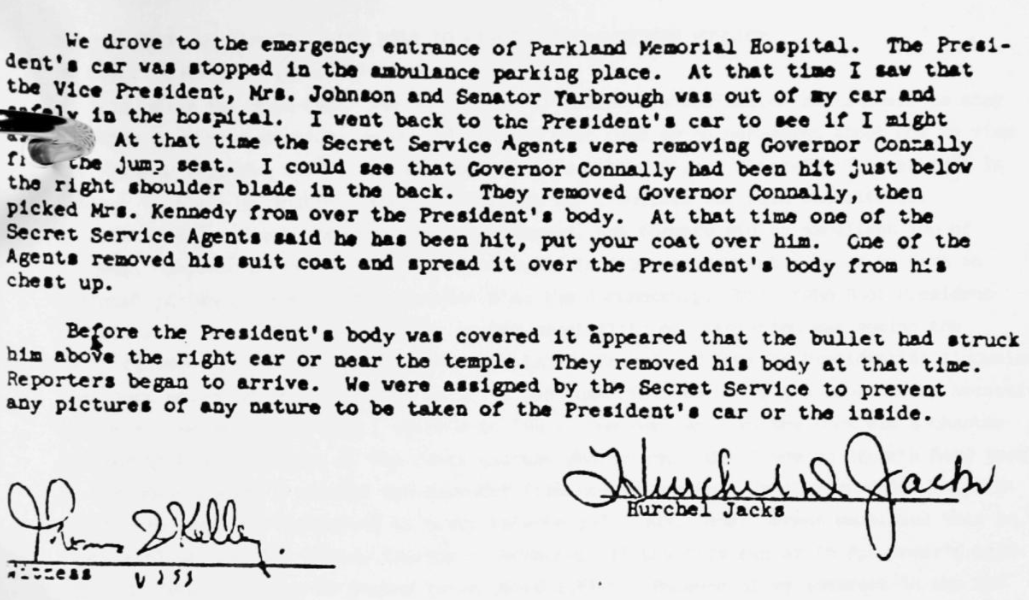
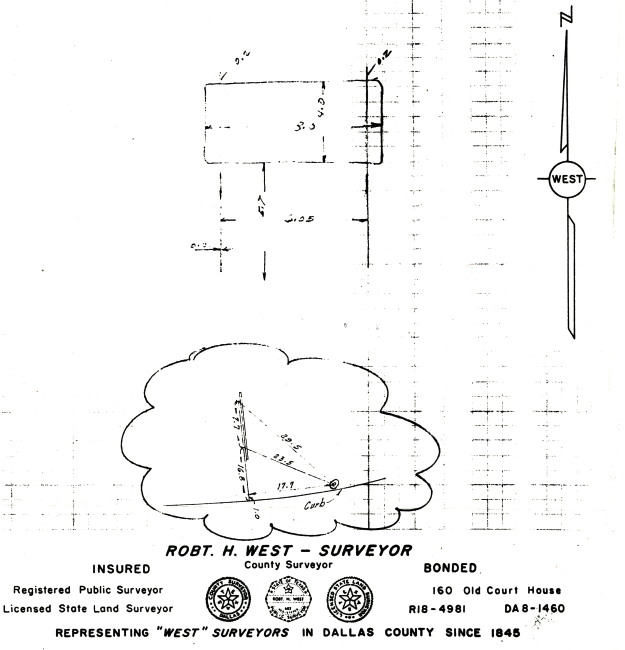
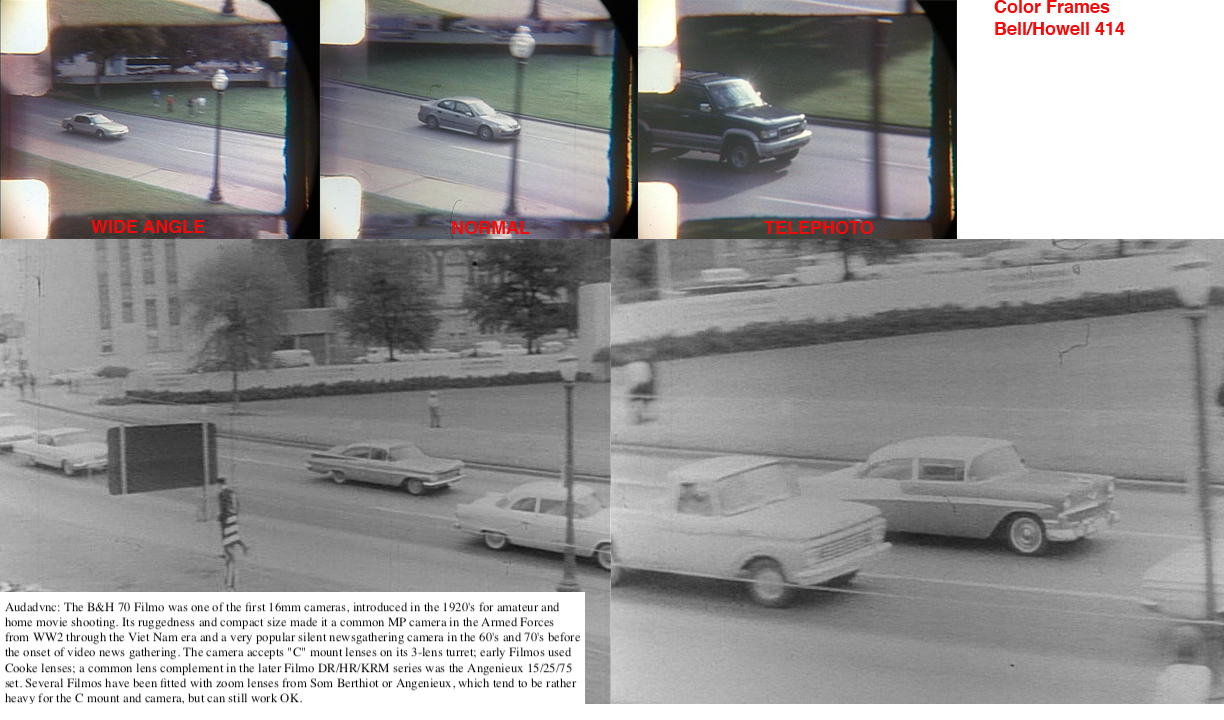
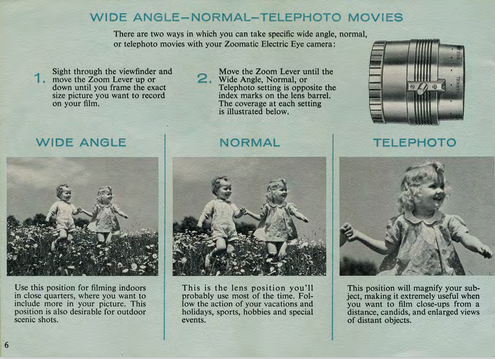

The Zapruder Film and NPIC/Hawkeyeworks Mysteries
in JFK Assassination Debate
Posted
I just relieved the burden. Read previous postings.
Frame removal is alteration.
Prove me wrong by supplying a Nix version that contains the extra Itek frames.
Been waiting for years and no-one has obliged.